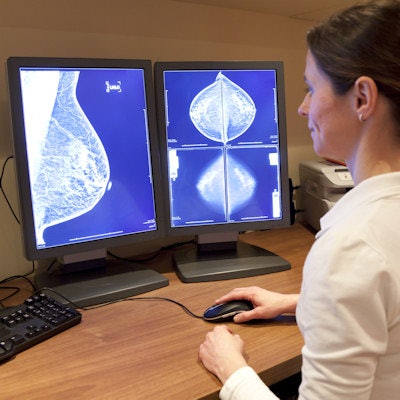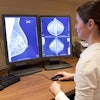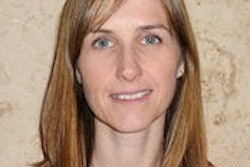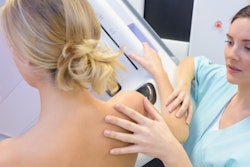
Would the use of technologists to interpret screening mammograms be a viable option if their performance were improved through regular quality assurance (QA) sessions with radiologists? Maybe, but not by much, according to the findings of a new study from the Netherlands published on January 7 in Radiology.
The researchers found that QA sessions in which a coordinating radiologist reviewed recalls recommended by radiologists and technologists identified less than 1% of missed breast cancers. In addition, the cancerous tumors identified in QA sessions didn't have any significant differences from those found earlier in the screening process.
"The role of quality assurance sessions in additional cancer detection is limited," wrote the authors, led by Dr. Angela Coolen from Elisabeth-TweeSteden Hospital in Tilburg, the Netherlands. "Tumor characteristics did not differ significantly from those cancers detected at radiologist double reading."
Helping hand?
Using technologists or radiographers to interpret exams such as screening mammograms could be an intriguing option in countries where radiologists are in short supply, such as for double reading with a radiologist. But previous research has been equivocal on the value of technologist image interpretation.
In the Dutch national breast screening program, radiographers are encouraged to look for abnormalities on screening mammograms. At six-week intervals, any abnormalities that are flagged by the radiographer but not recalled by the radiologist are reviewed by another radiologist. Coolen and colleagues wanted to determine if these QA sessions helped improve the performance of the radiographers.
The study included about 467,000 women in the Netherlands who participated in the Dutch breast screening program between 2009 and 2016. The program consisted of mammograms every two years for asymptomatic women, followed by a series of mammography readings by technologists and radiologists.
In the first step, a technologist obtained and immediately read a mammogram. A few days later, two board-certified radiologists read the same mammogram and recommended recall and additional breast cancer screening for women with BI-RADS categories 0, 4, or 5.
Every six weeks, the technologists also met with a coordinating radiologist for a QA session. The coordinating radiologist reviewed the radiologists' recall decisions with the technologists. The coordinating radiologist could also recall additional women if deemed necessary.
Of the nearly 467,000 women who participated in the program, 14,142 women were recalled for additional screening, and 3,156 were diagnosed with breast cancer.
The QA sessions had a sensitivity of 52%. Only 26 women with breast cancer (0.8%) were identified during the sessions.
Most of the cancers found during QA sessions were invasive and larger than 10 mm. They tended to have a greater proportion of triple-negative tumors, but the researchers found no significant differences in lesion type or tissue density between cancers detected during normal screening and those found in QA sessions. This could be due to the program's high cancer detection rate, the authors noted.
The study had some limitations. First, the design of the Dutch breast screening program differs from screening programs in other countries, so the results may not be generalized. In addition, the radiologists were not blinded to the technologists' recommendations, which may have been a source of bias.
Although the QA sessions only detected a small percentage of cancer cases, the sessions still may be valuable for other reasons, the authors concluded. Notably, they provide education and training for technologists.
"The number of extra cancers detected through these sessions was small (< 1%), and the mammographic and tumor characteristics of these cancers did not differ significantly compared with those cancers detected at radiologist double reading," the authors wrote. "However, these sessions serve many other purposes, such as continued training of technologists, discussing interesting and instructive cases, and receiving feedback on performance."



















